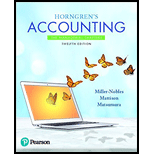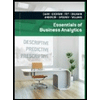
For Frank’s Funky Sounds, straight-line
Learning Objective 1
a. variable cost.
b. fixed cost.
c. mixed cost.
d. high-lowcost.
Straight line Depreciation:
Straight line method is a method of charging depreciation in which the depreciation charge remains fixed over the useful life of the asset. Depreciation on asset is calculated by diving the historical cost of the asset less salvage value (if any) by the useful life of the asset.
To determine:
The nature of cost of straight line depreciation on trucks
Answer to Problem 1QC
Solution:
For Frank’s Funky Sounds, straight-line depreciation on the trucks is a
b. fixed cost
Explanation of Solution
A fixed cost is a cost which remains fixed irrespective of the activities of the business. A straight-line depreciation charge remains fixed over the useful life of the asset. Also, the depreciation charge must be incurred even if the trucks are not used in the operations in the given year hence; the straight-line depreciation is a fixed cost.
A variable cost is a cost which varies with the level of activities of the business. When the production increases, the variable cost increases. An example of variable cost is the Direct material used in production process e.g. clothes in the production of shirt.
A mixed cost means a cost which has components of both fixed cost and variable cost. Some part is fixed and other is variable with the level of activity. An example of mixed cost is the salaries of salesman which consists of partly some fixed salary plus commission on sales volume which varies with the sales volume.
High-low cost is the method of determining the fixed cost and the rate of variable costs which are part of mixed costs. The total costs associated with the highest level of activity and the total costs which lowest level of activity is determined. The fixed cost is assumed to be constant is both the highest level and lowest level. The difference of the costs and the level of activity is determined to arrive at the variable cost for the differential activity. The differential variable cost is divided by the differential activity to determine the per unit variable cost. We can illustrate this by an example. Say, the total electricity cost for 15000 machine hours which is the highest activity level is $ 200000. The electricity cost for 10000 machine hours which is lowest activity level is $ 140000. Hence, the cost increases by $60,000 when the machine hours increase by 5000 machine hours. Hence, the variable cost per machine hour= $12. So, the fixed cost is $20000.
Hence, depreciation on asset using the straight-line method is a fixed cost.
Want to see more full solutions like this?
Chapter 21 Solutions
Horngren's Accounting (12th Edition)
Additional Business Textbook Solutions
Financial Accounting (12th Edition) (What's New in Accounting)
Essentials of Corporate Finance (Mcgraw-hill/Irwin Series in Finance, Insurance, and Real Estate)
Financial Accounting: Tools for Business Decision Making, 8th Edition
Foundations Of Finance
Fundamentals of Management (10th Edition)
Financial Accounting, Student Value Edition (5th Edition)
 Cornerstones of Cost Management (Cornerstones Ser...AccountingISBN:9781305970663Author:Don R. Hansen, Maryanne M. MowenPublisher:Cengage LearningPrinciples of Accounting Volume 2AccountingISBN:9781947172609Author:OpenStaxPublisher:OpenStax College
Cornerstones of Cost Management (Cornerstones Ser...AccountingISBN:9781305970663Author:Don R. Hansen, Maryanne M. MowenPublisher:Cengage LearningPrinciples of Accounting Volume 2AccountingISBN:9781947172609Author:OpenStaxPublisher:OpenStax College Essentials Of Business AnalyticsStatisticsISBN:9781285187273Author:Camm, Jeff.Publisher:Cengage Learning,
Essentials Of Business AnalyticsStatisticsISBN:9781285187273Author:Camm, Jeff.Publisher:Cengage Learning,


